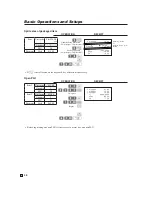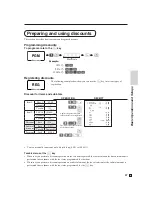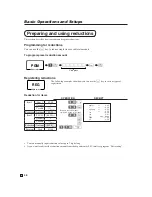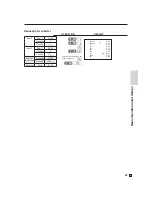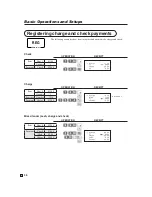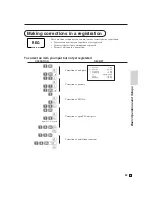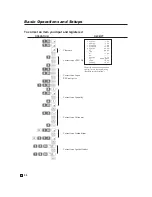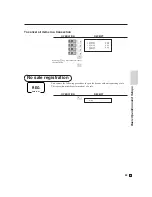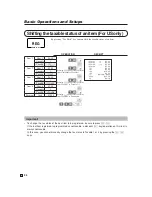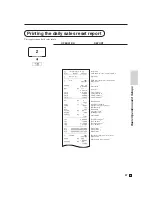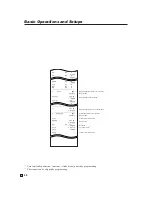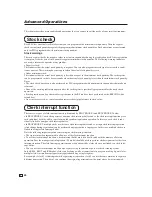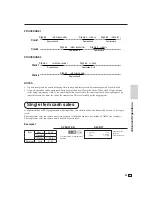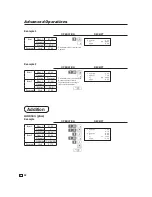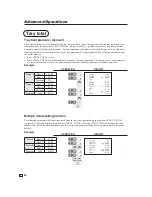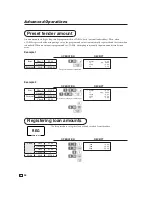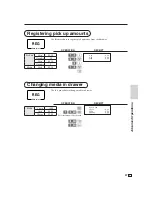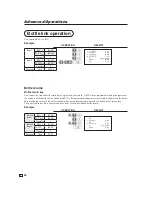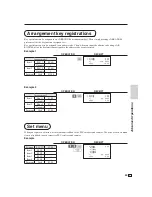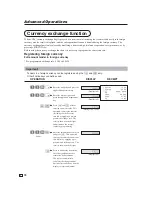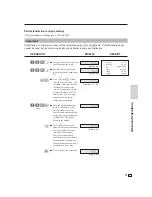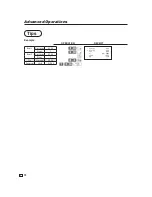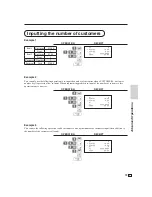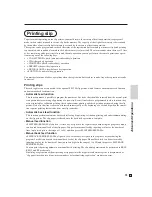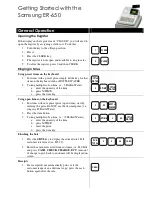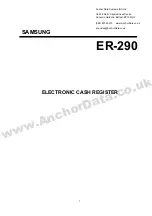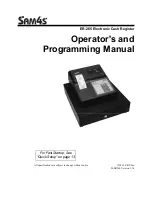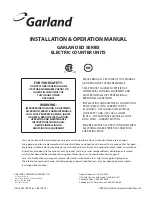
60
E
Advanced Operations
This chapter describes more sophisticated operations that you can use to suit the needs of your retail environment.
There are two types of clerk interrupt function, illustrated by PROCEDURE 1 and PROCEDURE 2 below.
• In PROCEDURE 1, each clerk possesses a unique clerk interrupt buffer, and so the clerk interrupt function gives
each individual clerk the ability to perform an independent registration operation. In this case, each clerk is indi-
vidually linked to a unique clerk interrupt buffer.
• In PROCEDURE 2, multiple clerks use the same clerk interrupt buffer, and so a single clerk interrupt operation
(clerk change during registration) can be performed any registration is in progress. In this case, multiple clerks are
linked to a single clerk interrupt buffer.
Note the following important points concerning the clerk interrupt function.
• The register must be programmed to allow use of the clerk interrupt function.
• To use the clerk interrupt function, a clerk interrupt buffer must
fi
rst be allocated with the memory allocation
operation. Next the manager control operation (X1 mode) should be used to perform clerk assignment for the clerk
interrupt function. The clerk interrupt operation cannot be performed by clerks who are not linked to a clerk inter-
rupt buffer.
• You can use the clerk interrupt function on a register set up to function as part of a check tracking system.
In the REG1, REG2, and RF modes, clerks can be change while a transaction is in progress, making it possible for
multiple clerks to simultaneously perform registrations using a single register.
For example, if clerk 1 is interrupted while registering a transaction, clerk 2 can use the same machine to register a
different transaction. Then clerk 1 can continue the original registration from the point where it was interrupted.
Each PLU has an actual stock totalizer that you can program with a minimum stock quantity. Then the register
checks actual stock quantities against the programmed minimum stock quantities. Stock operations are performed
only for PLUs programmed with minimum stock quantities.
Stock warnings
The cash register checks for negative values in actual stock quantities during the registration itself. After registration
is complete, it checks actual stock quantities against minimum stock quantities. The following warning indicators
are used to inform the operator of any problem.
• Negative stock:
This indicates that the actual stock quantity is negative. You can also program the cash register to treat this condi-
tion as an error. This warning does not appear when the actual stock quantity is zero.
• Under minimum stock:
This indicates that the actual stock quantity is less than or equal to the minimum stock quantity. The cash register
can be programmed so that a buzzer sounds when the actual stock quantity is less than the minimum stock quantity.
Notes
• The stock check operation is also performed for PLUs programmed with minimum stock quantities that make up
set menus.
• None of the warning indicators appear unless the cash register is speci
fi
cally programmed for the stock check
operation.
• Stock operations can be performed for registrations in the RF mode or those performed with <REFUND> (the
refund key).
• An error correct, void, or cancel operation restores the original of items in stock value.
Stock check
Clerk interrupt function
Содержание SE-C6000
Страница 2: ...CASIO COMPUTER CO LTD 6 2 Hon machi 1 chome Shibuya ku Tokyo 151 8543 Japan ...
Страница 60: ...59 E Basic Operations and Setups ...
Страница 122: ...121 E Advanced Operations ...

